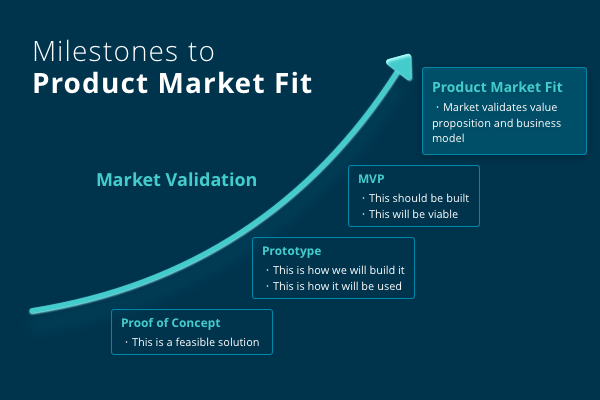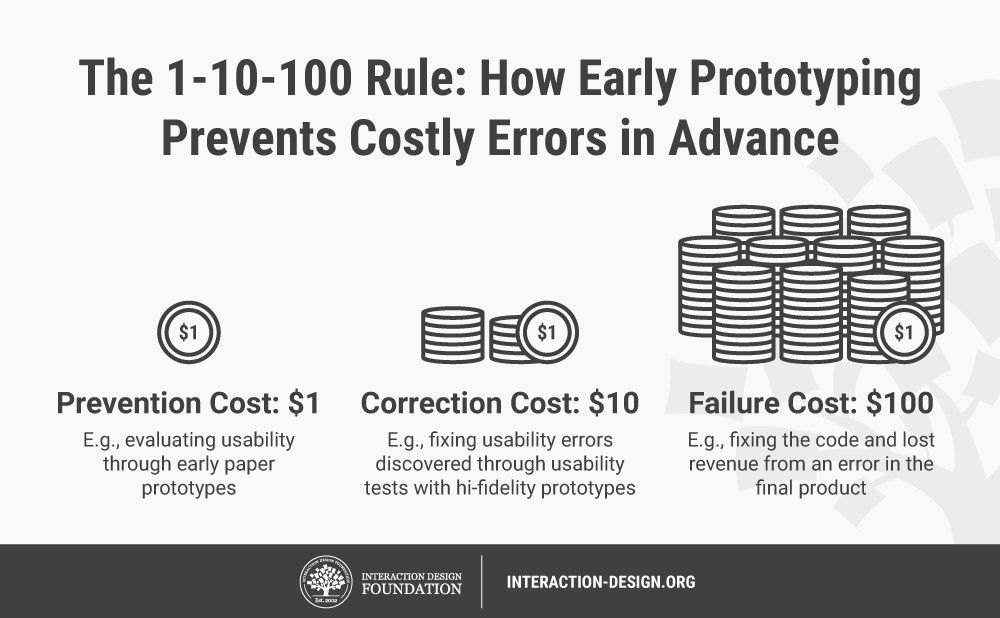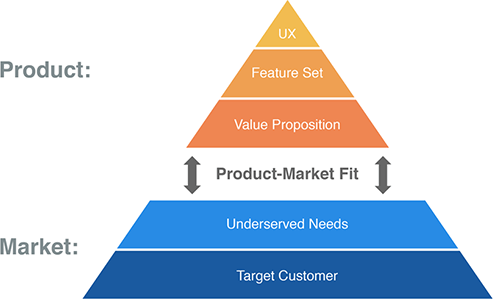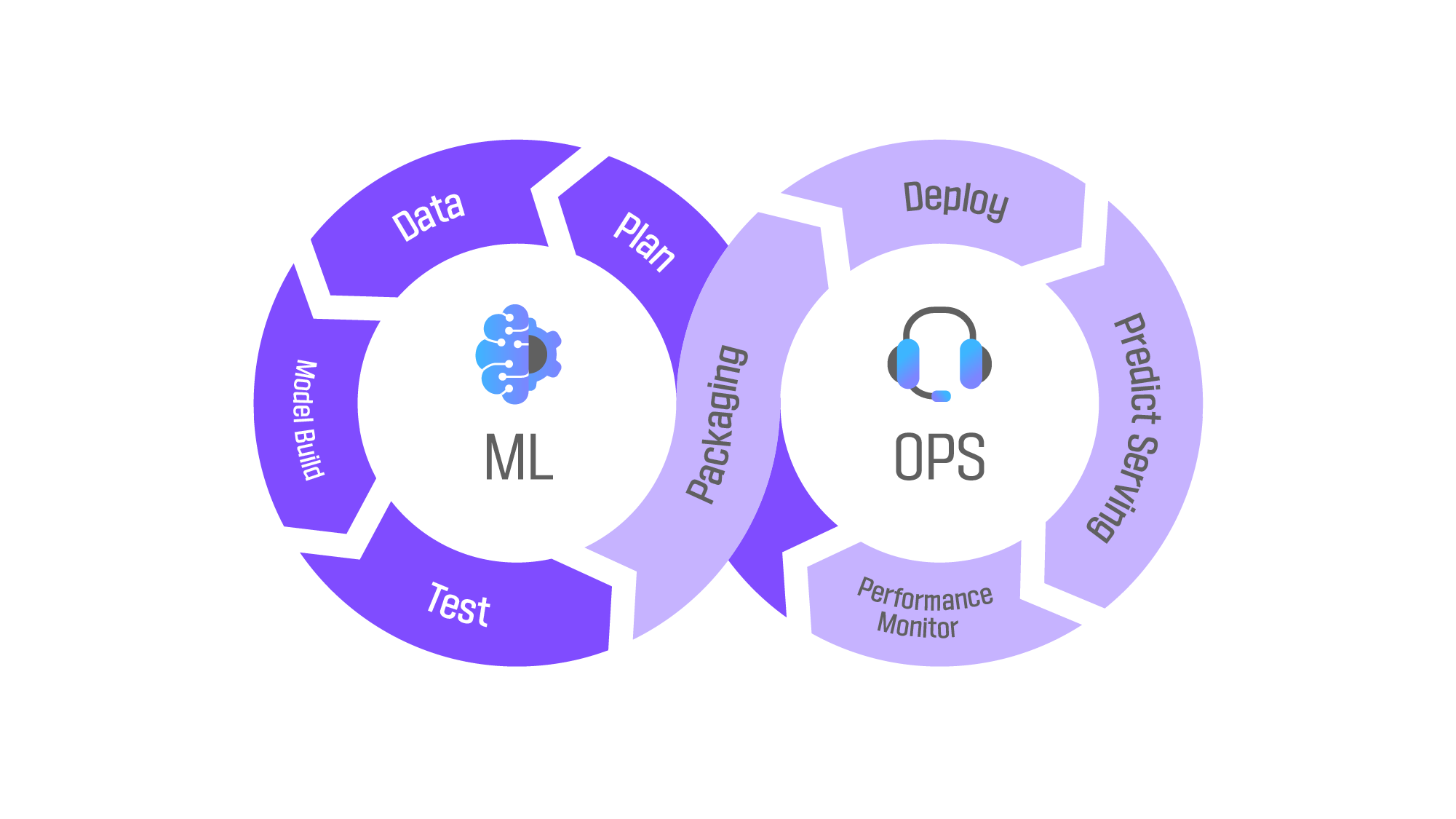The concept of a minimum viable product (MVP) is now pervasive. But it is not the only way to think about market development for new products. What’s the right way to be entrepreneurial, especially if you work in a highly regulated industry like finance?
MVP reflects a widely acceptable view that innovation is often experimental, and perhaps nowhere more experimental than in the startup community where entrepreneurs are, in effect, building a hypothesis about a product and its suitability for the market.
Product-Market Fit is an on older idea. It has much more fluidity about it – rather than proposing a series of iteration cycles it better reflects the reality of much entrepreneurship. Whatever the merits of product, and however aligned with customers, there is nonetheless an x factor that allows some products fly while others stay grounded.
The challenge to startup growth can be the presence of oligopolies or market entry barriers that come from deeply entrenched incumbents. This is very much the case in financial services. To date very few startups have managed to breakthrough as alternative providers. The banking community, by and large, already has a tier of suppliers in its core system portfolio. Why would they need another? The answer is process model innovation. Banks, and financial service companies, need processes that radically reduce costs and, potentially, provide new services.
But in a game where oligopolies still rule what do terms like MVP and Product Market Fit mean for startups?

1. Market Validation
Andreessen is not the only one who has emphasized the importance of so-called product-market fit in determining a startup’s success or failure. Research from CBinsights supports this notion, finding that 42% of startup failures were due to a lack of market need. The lesson we can distill from this is, “don’t offer something people don’t want.”
Essentially, those failed startups did not achieve market validation.
Market validation is the way to confirm that your idea is a solution to a problem people actually have.
Some business advisors define market validation as a survey distributed to specific user segments, testing their attachment to your solution. However, we take the view that market validation is not a single action or event, but the thread that ties your whole business model together from proof of concept (POC) to product-market fit (PMF).
You don’t need a minimum viable product (MVP), or even a prototype, to start market validation. You just need an idea, open ears, and honest tongues. As soon as you have an idea you want to execute, you should talk about it!
First, you can ask friends, family, and other founders and entrepreneurs you know. Then, to the greatest extent possible, reach outside of your network to hear from people that are more likely to give it to you straight. If you get to this point, and everyone has told you it’s a stupid idea, you should probably consider the possibility that it is, indeed, a stupid idea.
If your idea is validated through your internal and external network, you should design and write a plan to continue market validation through your product development cycle. An initial step is to define your market. Who will be using your product? Whose pain point are you helping to alleviate?
Here are some basic questions to help you construct customer profiles and define your market:
- What types of companies do potential customers work for?
- How big is the company?
- What is their job title?
- How will this product improve their lives/jobs?
- How can you find them?
If you can answer these questions, you are on your way to defining your market. This will be helpful when you are ready to launch a beta and reach out to your potential users. But we’re getting ahead of ourselves! Before any testing: alpha, beta, or otherwise, you will need to prove your concept.
2. POC: Proof Of Concept
A proof of concept (POC) is an exercise in which work is focused on determining whether an idea can be turned into a reality. A proof of concept is meant to determine the feasibility of the idea or to verify that the idea will function as envisioned.
It is sometimes also known as proof of principle.
A proof of concept is not intended to explore market demand for the idea, nor is it intended to determine the best production process.
Rather, its focus is to test whether the idea is viable — giving those involved in the proof-of-concept exercise the opportunity to explore the idea’s potential to be developed or built.
In software development, for example, a proof of concept would show whether an idea is feasible from a technology standpoint. For startups, a proof of concept would demonstrate financial viability.
Developing a proof of concept generally requires some investment of time or other resources, such as supporting technologies or necessary physical components to complete. Going through this process, however, enables companies to determine an idea’s viability before putting production-level resources behind an untested idea.
Developing a proof of concept can help a product owner to identify potential technical and logistical issues that might interfere with success. It also provides the opportunity for an organization to solicit internal feedback about a promising product or service, while reducing unnecessary risk and exposure and providing the opportunity for stakeholders to assess design choices early in the development cycle.
The individual or team going through this process can then use a successful proof of concept to convince stakeholders, managers or investors that the idea is worth pursuing further.
3. Prototype — Demonstrate the “How” of your Software Project
Prototyping is the fourth phase of both design thinking and design sprints. It’s an essential part of user experience (UX) design that usually comes after ideation, where you/your team have created and selected ideas that can solve users’ needs. In prototyping, you craft a simple experimental model of your proposed product so you can check how well it matches what users want through the feedback they give. You should consider prototyping from early on—using paper prototyping, if appropriate—so the feedback you gather from users can help guide development.
The advantages of prototyping are that you:
- Have a solid foundation from which to ideate towards improvements—giving all stakeholders a clear picture of the potential benefits, risks and costs associated with where a prototype might lead.
- Can adapt changes early—thereby avoiding commitment to a single, falsely-ideal version, getting stuck on local maxima of UX and later incurring heavy costs due to oversights.
- Show the prototype to your users so they can give you their feedback to help pinpoint which elements/variants work best and whether an overhaul is required.
- Have a tool to experiment with associated parts of the users’ needs and problems—therefore, you can get insights into less-obvious areas of the users’ world (e.g., you notice them using it for additional purposes or spot unforeseen accessibility issues such as challenges to mobile use).
- Provide a sense of ownership to all concerned stakeholders—therefore fostering emotional investment in the product’s ultimate success.
- Improve time-to-market by minimizing the number of errors to correct before product release.

4. MVP: Minimum Viable Product
A minimum viable product (MVP) is a concept from Lean Startup that stresses the impact of learning in new product development. Eric Ries, defined an MVP as that version of a new product which allows a team to collect the maximum amount of validated learning about customers with the least effort. This validated learning comes in the form of whether your customers will actually purchase your product.
A key premise behind the idea of MVP is that you produce an actual product (which may be no more than a landing page, or a service with an appearance of automation, but which is fully manual behind the scenes) that you can offer to customers and observe their actual behavior with the product or service. Seeing what people actually do with respect to a product is much more reliable than asking people what they would do.
The primary benefit of an MVP is you can gain understanding about your customers’ interest in your product without fully developing the product. The sooner you can find out whether your product will appeal to customers, the less effort and expense you spend on a product that will not succeed in the market.
Teams use the term MVP, but don’t fully understand its intended use or meaning. Often this lack of understanding manifests in believing that an MVP is the smallest amount of functionality they can deliver, without the additional criteria of being sufficient to learn about the business viability of the product.
Teams may also confuse an MVP–which has a focus on learning–for a Minimum Marketable Feature (MMF) or Minimum Marketable Product (MMP)–which has a focus on earning. There’s not too much harm in this unless the team becomes too focused on delivering something without considering whether it is the right something that satisfies customer’s needs.
Teams stress the minimum part of MVP to the exclusion of the viable part. The product delivered is not sufficient quality to provide an accurate assessment of whether customers will use the product.
Teams deliver what they consider an MVP, and then do not do any further changes to that product, regardless of feedback they receive about it.
Proper use of an MVP means that a team may dramatically change a product that they deliver to their customers or abandon the product together based on feedback they receive from their customers. The minimum aspect of MVP encourages teams to do the least amount of work possible to useful feedback (Eric Ries refers to this as validated learning) which helps them avoid working on a product that no one wants.
5. PMF: Recognizing Product-Market Fit
Product-market fit describes a scenario in which a company’s target customers are buying, using, and telling others about the company’s product in numbers large enough to sustain that product’s growth and profitability.
According to entrepreneur and investor Marc Andreesen, who is often credited with developing the concept, product-market fit means finding a good market with a product capable of satisfying that market.

Alex Schultz, Facebook’s VP of Growth, says the biggest problem he sees facing the companies he advises is that they don’t have product-market fit when they think they do.
So, why is achieving it so important? Why do many venture capitalists demand evidence of product-market fit before investing in a company? Why does Andreesen, in fact, believe in the division of every startup’s life into two key stages: before product-market fit (BPMF) and after product-market fit (APMF)?
The answer is simple: Before you develop a product that you confirm enough people are willing to pay for, your team cannot afford to focus on other important strategic objectives such as growth or upselling existing users. Those initiatives could even be counterproductive, in fact, if you haven’t first determined that your product has enough of a market to sustain itself and generate a profit.
We generally associate the concept with marketing and product management. In reality, achieving it is a shared responsibility across the company. Sales, business development, support, finance, and all other departments help the company reach this important milestone.
No single set of metrics can tell any business when it achieves product-market fit. But Andrew Chen, a venture capitalist, offers some signals that a company is heading in the right direction with its offering:
- When surveying potential customers or allowing them to test your product, does some segment indicate they will switch to your product?
- Are some users who have rejected similar products on the market willing to try yours?
- When user testing, do people group your product accurately with the right competitive offerings?
- Do users demonstrate an understanding of your product’s differentiators or unique value proposition?
- How do your underlying metrics (such as retention rates of users) measure up against those of your competitors?
Chen’s signals represent a mix of both qualitative and quantitative metrics. This is by design. Whatever methods your team uses to gauge success, you will want to include a mix of both as well. For example:
Quantitative:
- NPS score
- Churn rate
- Growth rate
- Market share
Qualitative:
- Word of mouth. (As Andreesen says, if your customers talk about your products with others, they effectively become your product’s sales reps.)
- Calls from the media or industry analysts come in much more frequently, and coverage of your product and company increases.
Just as the best way to measure product-market fit will differ for each company, there is no single path to achieving it. In his book, The Lean Product Playbook, Dan Olsen offers one high-level method that can help get your team started:
1. Determine your target customer
2. Identify underserved needs of that customer
3. Define your value proposition
4. Specify your minimum viable product (MVP) feature set
5. Develop your MVP
6. Test your MVP with customers
Then, based on those user tests and surveys, use metrics like the ones suggested above, from Andrew Chen, to determine if you’re headed in the right direction.

We are delighted to announce that Slitigenz has been recognized as the top IT outsourcing firm by the esteemed SoftwareOutsourcing…

2022 sparked the AI revolution, 2023 saw it infiltrate the business world, and now, in 2024, we’re at the brink…

Hey there! Ever wondered what the buzz around MLOps is all about? Let’s break it down! MLOps, short for Machine…

Whisper represents a cutting-edge neural network model meticulously crafted by OpenAI, designed to adeptly tackle the complexities of speech-to-text conversions.…


15 Comments
Your comment is awaiting moderation.
how can i get clomid without a prescription: buying clomid without rx – where can i buy clomid without prescription
Your comment is awaiting moderation.
buy cipro online canada: antibiotics cipro – ciprofloxacin 500 mg tablet price
Your comment is awaiting moderation.
doxycycline cost india: doxycycline buy online india – doxycycline buy online india
https://paxloviddelivery.pro/# paxlovid pharmacy
Your comment is awaiting moderation.
https://doxycyclinedelivery.pro/# buy doxycycline south africa
Your comment is awaiting moderation.
https://paxloviddelivery.pro/# paxlovid for sale
doxycycline singapore rx doxycycline 100mg doxycycline price compare
Your comment is awaiting moderation.
Hello there! This article could not be written much better! Looking through this article reminds me of my previous roommate! He continually kept talking about this. I most certainly will forward this article to him. Fairly certain he’ll have a very good read. I appreciate you for sharing!
Your comment is awaiting moderation.
can you get clomid no prescription: can i get clomid pill – can you buy clomid
https://doxycyclinedelivery.pro/# doxycycline tablets online india
Your comment is awaiting moderation.
paxlovid pill: paxlovid cost without insurance – paxlovid generic
Your comment is awaiting moderation.
https://paxloviddelivery.pro/# paxlovid generic
Your comment is awaiting moderation.
buy doxycycline 100mg canada: doxycycline prescription coupon – doxycycline 50 mg price uk
https://paxloviddelivery.pro/# paxlovid india
Your comment is awaiting moderation.
http://ciprodelivery.pro/# purchase cipro
amoxicillin cephalexin amoxicillin 50 mg tablets amoxicillin price canada
Your comment is awaiting moderation.
Good post. I learn something totally new and challenging on blogs I stumbleupon everyday. It’s always useful to read articles from other writers and practice something from their web sites.
Your comment is awaiting moderation.
http://ciprodelivery.pro/# antibiotics cipro
Your comment is awaiting moderation.
paxlovid india: п»їpaxlovid – paxlovid for sale
Your comment is awaiting moderation.
cipro pharmacy: antibiotics cipro – buy generic ciprofloxacin
http://ciprodelivery.pro/# п»їcipro generic
buy cipro online without prescription cipro pharmacy purchase cipro
Your comment is awaiting moderation.
cipro 500mg best prices: buy cipro online without prescription – buy cipro online
http://paxloviddelivery.pro/# paxlovid for sale
Your comment is awaiting moderation.
https://paxloviddelivery.pro/# paxlovid covid
amoxicillin 500mg price amoxicillin 500 mg tablet price amoxil pharmacy
Your comment is awaiting moderation.
https://clomiddelivery.pro/# cost of clomid pills
Your comment is awaiting moderation.
buy amoxicillin from canada: amoxicillin tablets in india – amoxicillin 500mg over the counter
http://ciprodelivery.pro/# buy ciprofloxacin over the counter
oral doxycycline doxycycline 100g doxycycline tablets buy online
Your comment is awaiting moderation.
amoxicillin in india: buy amoxil – canadian pharmacy amoxicillin
Your comment is awaiting moderation.
https://amoxildelivery.pro/# can i buy amoxicillin online
Your comment is awaiting moderation.
doxycycline 100 mg coupon: 40mg doxycycline online – cheap doxycycline
http://doxycyclinedelivery.pro/# doxycycline without rx
Your comment is awaiting moderation.
http://clomiddelivery.pro/# order generic clomid pills
order amoxicillin 500mg amoxicillin generic amoxicillin buy canada
Your comment is awaiting moderation.
http://clomiddelivery.pro/# cost of clomid prices
Your comment is awaiting moderation.
doxycycline cost in india: buying doxycycline online – doxycycline 100mg best buy
http://clomiddelivery.pro/# can i get cheap clomid without prescription
buy doxycycline 100mg cheap where can you get doxycycline doxycycline price canada
Your comment is awaiting moderation.
The very next time I read a blog, Hopefully it doesn’t disappoint me just as much as this one. I mean, Yes, it was my choice to read, nonetheless I genuinely believed you would probably have something interesting to say. All I hear is a bunch of moaning about something you could possibly fix if you were not too busy looking for attention.
Your comment is awaiting moderation.
Hello there! I simply wish to offer you a big thumbs up for the great information you’ve got right here on this post. I’ll be coming back to your web site for more soon.
Your comment is awaiting moderation.
Greetings! Very useful advice in this particular article! It’s the little changes which will make the largest changes. Thanks a lot for sharing!
Your comment is awaiting moderation.
You’re so interesting! I don’t believe I’ve read a single thing like this before. So wonderful to find somebody with some unique thoughts on this topic. Seriously.. thank you for starting this up. This web site is something that is required on the web, someone with a bit of originality.
Your comment is awaiting moderation.
cipro ciprofloxacin: cipro for sale – cipro pharmacy
http://amoxildelivery.pro/# antibiotic amoxicillin
Your comment is awaiting moderation.
http://paxloviddelivery.pro/# paxlovid india
can i order generic clomid without insurance where can i buy cheap clomid without prescription how to get generic clomid without insurance
Your comment is awaiting moderation.
can i purchase cheap clomid: get generic clomid without rx – cost of cheap clomid pills
Your comment is awaiting moderation.
Excellent web site you’ve got here.. It’s difficult to find good quality writing like yours these days. I truly appreciate individuals like you! Take care!!
Your comment is awaiting moderation.
http://doxycyclinedelivery.pro/# doxycycline pharmacy uk
Your comment is awaiting moderation.
doxycycline online without prescription: where can i buy doxycycline no prescription – doxycycline over the counter india
https://amoxildelivery.pro/# generic amoxicillin cost
where to buy amoxicillin pharmacy buy amoxicillin online cheap amoxicillin online pharmacy
Your comment is awaiting moderation.
https://doxycyclinedelivery.pro/# doxycycline price south africa
can i purchase clomid without insurance can i order clomid for sale can you get generic clomid pills
Your comment is awaiting moderation.
ampicillin amoxicillin: amoxicillin 500 – amoxicillin 500mg capsule cost
https://clomiddelivery.pro/# can i order generic clomid pill
Your comment is awaiting moderation.
It’s hard to come by educated people in this particular subject, but you sound like you know what you’re talking about! Thanks
Your comment is awaiting moderation.
https://paxloviddelivery.pro/# paxlovid price
Your comment is awaiting moderation.
ciprofloxacin generic: buy cipro online canada – buy ciprofloxacin over the counter
Your comment is awaiting moderation.
doxycycline 250: doxycycline price usa – doxyhexal
http://ciprodelivery.pro/# ciprofloxacin order online
buy paxlovid online Paxlovid over the counter paxlovid price
Your comment is awaiting moderation.
http://ciprodelivery.pro/# cipro pharmacy
can you buy amoxicillin over the counter in canada amoxicillin over the counter in canada amoxicillin script
Your comment is awaiting moderation.
paxlovid generic: п»їpaxlovid – paxlovid buy
http://clomiddelivery.pro/# cheap clomid pills
Your comment is awaiting moderation.
https://ciprodelivery.pro/# buy generic ciprofloxacin
Your comment is awaiting moderation.
reputable mexican pharmacies online: buying prescription drugs in mexico online – best online pharmacies in mexico
Your comment is awaiting moderation.
canadian pharmacies online: canadianpharmacyworld – drugs from canada
http://canadapharmast.com/# canadian pharmacy 24h com
india online pharmacy buy prescription drugs from india top online pharmacy india
Your comment is awaiting moderation.
Good write-up. I absolutely love this site. Stick with it!
Your comment is awaiting moderation.
mexico drug stores pharmacies: mexican mail order pharmacies – reputable mexican pharmacies online
Your comment is awaiting moderation.
canadian pharmacy ed medications onlinecanadianpharmacy 24 best canadian online pharmacy
Your comment is awaiting moderation.
drugs from canada: canadian pharmacy phone number – online canadian pharmacy
Your comment is awaiting moderation.
https://canadapharmast.com/# legitimate canadian pharmacy online
Your comment is awaiting moderation.
pharmacies in mexico that ship to usa: mexican rx online – mexico drug stores pharmacies
https://indiapharmast.com/# online shopping pharmacy india
mail order pharmacy india world pharmacy india buy medicines online in india
Your comment is awaiting moderation.
mexican mail order pharmacies: purple pharmacy mexico price list – mexican pharmaceuticals online
Your comment is awaiting moderation.
world pharmacy india: buy prescription drugs from india – top 10 online pharmacy in india
Your comment is awaiting moderation.
Online medicine order Online medicine home delivery reputable indian online pharmacy
Your comment is awaiting moderation.
buying prescription drugs in mexico: mexico drug stores pharmacies – buying prescription drugs in mexico
Your comment is awaiting moderation.
http://canadapharmast.com/# legit canadian pharmacy
Your comment is awaiting moderation.
п»їbest mexican online pharmacies: buying from online mexican pharmacy – mexico drug stores pharmacies
Your comment is awaiting moderation.
top 10 online pharmacy in india: india pharmacy – world pharmacy india
Your comment is awaiting moderation.
india online pharmacy: best india pharmacy – buy prescription drugs from india
http://foruspharma.com/# mexico drug stores pharmacies
india pharmacy buy prescription drugs from india top 10 pharmacies in india
Your comment is awaiting moderation.
online canadian pharmacy safe canadian pharmacy canada drug pharmacy
Your comment is awaiting moderation.
reliable canadian pharmacy: reputable canadian pharmacy – canadian pharmacy no scripts
Your comment is awaiting moderation.
buying prescription drugs in mexico online: best online pharmacies in mexico – mexican drugstore online
Your comment is awaiting moderation.
https://canadapharmast.com/# certified canadian pharmacy
Your comment is awaiting moderation.
canadian drugs pharmacy: my canadian pharmacy rx – safe canadian pharmacy
Your comment is awaiting moderation.
reputable indian pharmacies: india pharmacy – india online pharmacy
http://canadapharmast.com/# canadian pharmacy king
indian pharmacy paypal indianpharmacy com online pharmacy india
Your comment is awaiting moderation.
buying from online mexican pharmacy mexican border pharmacies shipping to usa п»їbest mexican online pharmacies
Your comment is awaiting moderation.
buy prescription drugs from india: top 10 online pharmacy in india – reputable indian online pharmacy
Your comment is awaiting moderation.
Thank you for your sharing. I am worried that I lack creative ideas. It is your article that makes me full of hope. Thank you. But, I have a question, can you help me?
Your comment is awaiting moderation.
mexican rx online
https://cmqpharma.online/# mexican mail order pharmacies
mexican mail order pharmacies
Your comment is awaiting moderation.
purple pharmacy mexico price list: online mexican pharmacy – reputable mexican pharmacies online
Your comment is awaiting moderation.
For latest news you have to visit world-wide-web and on internet I found
this web site as a finest site for most up-to-date updates.
Your comment is awaiting moderation.
Hi there, just became aware of your blog through Google, and found that it is truly informative.
I’m going to watch out for brussels. I will be grateful
if you continue this in future. Lots of people will be benefited from your writing.
Cheers! Escape roomy lista
Your comment is awaiting moderation.
mexican border pharmacies shipping to usa
https://cmqpharma.online/# mexico drug stores pharmacies
buying prescription drugs in mexico online
Your comment is awaiting moderation.
mexico drug stores pharmacies: mexican pharmacy online – buying from online mexican pharmacy
Can you be more specific about the content of your article? After reading it, I still have some doubts. Hope you can help me.
Thanks for paying attention to our blog. Our consultation is free so you can leave your questions here and we will try to answer them asap
Your article helped me a lot, is there any more related content? Thanks!
Thanks for paying attention to our blog. Our consultation is free so you can leave your questions here and we will try to answer them asap
Your article gave me a lot of inspiration, I hope you can explain your point of view in more detail, because I have some doubts, thank you.
Thanks for paying attention to our blog. Our consultation is free so you can leave your questions here and we will try to answer them asap.
Your article gave me a lot of inspiration, I hope you can explain your point of view in more detail, because I have some doubts, thank you.
I am a website designer. Recently, I am designing a website template about gate.io. The boss’s requirements are very strange, which makes me very difficult. I have consulted many websites, and later I discovered your blog, which is the style I hope to need. thank you very much. Would you allow me to use your blog style as a reference? thank you!
Thank you so much for paying attention to our blog. We often update new blog posts on our blog site. So you can visit our site weekly and read more contents from our team.
At the beginning, I was still puzzled. Since I read your article, I have been very impressed. It has provided a lot of innovative ideas for my thesis related to gate.io. Thank u. But I still have some doubts, can you help me? Thanks.
It’s our pleasure to help you with your problems. Just leave your question so we will try to give some advice. Thanks for your attention!
Your article made me suddenly realize that I am writing a thesis on gate.io. After reading your article, I have a different way of thinking, thank you. However, I still have some doubts, can you help me? Thanks.
It’s our pleasure to help you with your problems. Just leave your question so we will try to give some advice. Thanks for your attention!
Thanks for sharing. I read many of your blog posts, cool, your blog is very good.
Hi there, thanks for reading our blog posts.